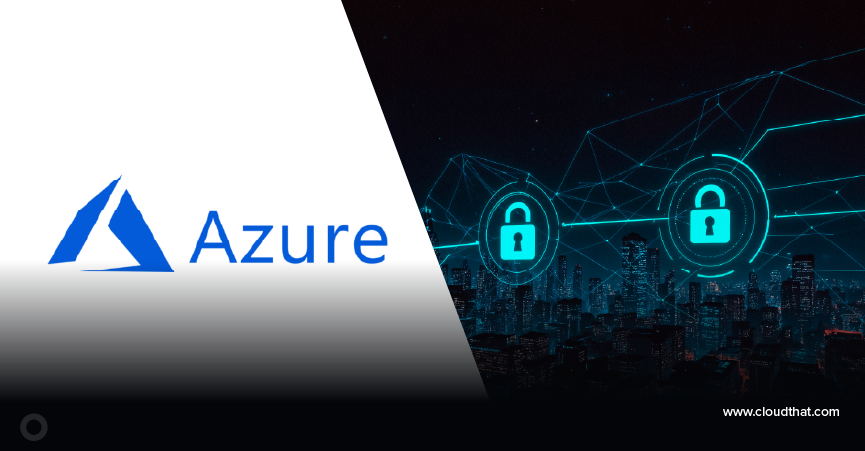|
Voiced by Amazon Polly |
Introduction
Serverless computing has revolutionized how organizations build and deploy applications, offering unprecedented scalability, cost-efficiency, and operational simplicity. Amazon Web Services (AWS) leads this transformation with its comprehensive serverless ecosystem, centered around AWS Lambda, Amazon API Gateway, and supporting services. This article explores advanced serverless architecture patterns, implementation strategies, and best practices for building production-ready applications.
Pioneers in Cloud Consulting & Migration Services
- Reduced infrastructural costs
- Accelerated application deployment
Understanding Serverless Architecture Fundamentals
Serverless architecture represents a cloud computing execution model where cloud providers automatically manage infrastructure provisioning, scaling, and maintenance. Despite its name, servers still exist, but developers are abstracted from server management responsibilities. AWS Lambda, the cornerstone of AWS serverless offerings, executes code in response to events without requiring server provisioning or management.
Automatic scaling handles traffic spikes seamlessly, from zero to thousands of concurrent executions. Reduced operational overhead allows development teams to focus on business logic rather than infrastructure management. Enhanced fault tolerance comes built in through AWS’s managed infrastructure and automatic failover mechanisms.
Core AWS Serverless Components
AWS Lambda: The Compute Engine
AWS Lambda serves as the primary compute service for serverless applications, supporting multiple programming languages including Python, Node.js, Java, C#, Go, and Ruby. AWS Lambda functions execute in isolated environments called execution contexts, which are reused across invocations to improve performance. Understanding the execution context lifecycle is crucial for optimizing function performance and managing state.
AWS Lambda’s event-driven architecture integrates seamlessly with over 200 AWS services. Common event sources include API Gateway for HTTP requests, Amazon S3 for object operations, Amazon DynamoDB for database changes, Amazon CloudWatch for scheduled events, and Amazon SQS for message processing. Each event source provides specific event structures and invocation patterns that influence the design of functions.
Amazon API Gateway: The Front Door
Amazon API Gateway acts as the managed service for creating, deploying, and managing REST and WebSocket APIs. It provides essential features including request/response transformation, authentication and authorization, rate limiting, caching, and monitoring. API Gateway supports multiple integration types, with AWS Lambda proxy integration being the most common for serverless applications.
Advanced Amazon API Gateway features include custom authorizers for implementing complex authentication logic, request validation to ensure data integrity, and stage management for controlling the deployment lifecycle. WebSocket APIs enable real-time, bidirectional communication, which is essential for applications that require live updates or chat functionality.
Serverless Architecture Patterns
Microservices Pattern
The microservices pattern decomposes applications into small, independent services, each handling specific business capabilities. In serverless implementations, each microservice typically consists of one or more AWS Lambda functions, which are exposed through Amazon API Gateway endpoints. This pattern promotes loose coupling, independent deployment, and technology diversity.
Implementation considerations include defining service boundaries, developing inter-service communication strategies, and managing data consistency. Event-driven communication through services like Amazon EventBridge or Amazon SNS helps maintain loose coupling while ensuring reliable message delivery.
Event-Driven Architecture
Event-driven architecture leverages events as the primary communication mechanism between components. AWS provides multiple event routing services, including Amazon EventBridge for custom events, Amazon SNS for pub/sub messaging, and Amazon SQS for reliable queuing. This pattern enables highly decoupled, scalable systems that respond dynamically to business events.
Event sourcing and CQRS (Command Query Responsibility Segregation) patterns work exceptionally well in serverless environments. Event sourcing stores all changes as events, providing complete audit trails and enabling temporal queries. CQRS separates read and write operations, allowing independent optimization of each path.
Backend for Frontend (BFF)
The BFF pattern creates dedicated backend services for specific frontend applications or client types. In serverless implementations, different AWS Lambda functions and Amazon API Gateway configurations serve web applications, mobile apps, and third-party integrations. This pattern optimizes data transfer and processing for each client type while maintaining code reusability.
Implementation Best Practices
Function Design Principles
Effective AWS Lambda function design adheres to the single responsibility principle, with each function handling a single, specific task. Functions should be stateless, idempotent, and designed for quick startup times. Cold start optimization techniques include minimizing deployment package size, using provisioned concurrency for critical functions, and implementing connection pooling for database connections.
Error handling strategies must account for both synchronous and asynchronous invocation patterns. Synchronous functions should return appropriate HTTP status codes and error messages. Asynchronous functions require dead letter queues for failed invocations and retry logic for transient failures.
Security Implementation
Serverless security follows the shared responsibility model, with AWS managing infrastructure security while customers handle application-level security. AWS IAM roles and policies provide fine-grained access control, following the principle of least privilege. Each AWS Lambda function should have a dedicated execution role with minimal required permissions.
Amazon API Gateway security features include AWS WAF integration for protection against common web exploits, API keys for usage tracking, and custom authorizers for complex authentication scenarios. Secrets management through AWS Secrets Manager or AWS Systems Manager Parameter Store ensures secure handling of sensitive configuration data.
Monitoring and Observability
Comprehensive monitoring combines AWS native services with custom metrics and logging. Amazon CloudWatch provides basic metrics, including invocation count, duration, and error rates. X-Ray enables distributed tracing across serverless components, helping identify performance bottlenecks and error sources.
Custom metrics, as provided by Amazon CloudWatch Metrics, offer business-specific insights. Structured logging with correlation IDs enables request tracing across multiple functions, allowing for a comprehensive view of request processing. Third-party monitoring solutions, such as Datadog or New Relic, offer enhanced observability features for complex serverless applications.
Performance Optimization Strategies
Cold Start Mitigation
Cold starts occur when AWS Lambda creates new execution contexts, introducing latency for initial requests. Mitigation strategies include provisioned concurrency for predictable traffic patterns, connection pooling for database connections, and lazy loading for expensive initialization operations.
Language choice has a significant impact on cold start performance. Compiled languages, such as Go and Java (with GraalVM), typically have faster startup times than interpreted languages. However, runtime performance and ecosystem considerations often outweigh cold start optimization for most applications.
Memory and Timeout Configuration
AWS Lambda memory allocation directly affects CPU performance, with higher memory allocations providing proportionally more CPU power. Performance testing helps identify optimal memory settings that strike a balance between cost and performance. Timeout configuration should account for worst-case execution scenarios while preventing runaway functions.
Database Integration Patterns
Traditional database connection patterns are not well-suited for serverless environments due to connection limits and cold starts. Connection pooling services, such as Amazon RDS Proxy, provide managed connection pooling for relational databases. NoSQL databases, such as Amazon DynamoDB, offer better serverless integration with on-demand scaling and direct SDK integration.
Cost Optimization Techniques
Serverless cost optimization requires understanding pricing models and usage patterns. AWS Lambda pricing includes request charges and duration charges based on allocated memory. The Amazon API Gateway charges per request, with additional fees for data transfer and caching.
Cost optimization strategies include right-sizing function memory allocation, implementing efficient caching strategies, using reserved capacity for predictable workloads, and optimizing function duration through performance improvements. Regular cost analysis helps identify optimization opportunities and prevent unexpected charges.
Real-World Implementation Example
Consider an e-commerce order processing system built with serverless architecture. The system encompasses order submission via Amazon API Gateway and AWS Lambda, payment processing with external service integration, inventory management utilizing Amazon DynamoDB, and notification delivery through Amazon SNS and Amazon SES.
The architecture implements event-driven patterns, utilizing EventBridge to route events to multiple processing functions. Error handling includes retry logic for payment failures and dead letter queues for unprocessable orders. Monitoring provides real-time visibility into order processing metrics and system health.
Future Considerations and Trends
Serverless computing continues evolving with new capabilities and patterns. Container support through AWS Lambda enables larger deployment packages and custom runtimes. Edge computing with AWS Lambda@Edge brings processing closer to users, resulting in improved performance. Machine learning integration through services like Amazon SageMaker enables the development of intelligent, serverless applications.
Emerging patterns include serverless-first development approaches, where applications are designed specifically for serverless platforms rather than adapted from traditional architectures. Multi-cloud serverless strategies provide vendor independence while leveraging best-of-breed services from multiple providers.
Conclusion
Serverless architecture, utilizing AWS Lambda and Amazon API Gateway, provides a powerful foundation for building scalable and cost-effective applications. Success requires understanding serverless principles, implementing appropriate architectural patterns, and adhering to operational best practices.
The serverless ecosystem continues to mature with enhanced tooling, improved performance characteristics, and expanded integration capabilities. Development teams investing in serverless expertise position themselves to leverage these advances and deliver innovative solutions that scale with business requirements.
Drop a query if you have any questions regarding AWS Lambda or Amazon API Gateway and we will get back to you quickly.
Making IT Networks Enterprise-ready – Cloud Management Services
- Accelerated cloud migration
- End-to-end view of the cloud environment
About CloudThat
CloudThat is an award-winning company and the first in India to offer cloud training and consulting services worldwide. As a Microsoft Solutions Partner, AWS Advanced Tier Training Partner, and Google Cloud Platform Partner, CloudThat has empowered over 850,000 professionals through 600+ cloud certifications winning global recognition for its training excellence including 20 MCT Trainers in Microsoft’s Global Top 100 and an impressive 12 awards in the last 8 years. CloudThat specializes in Cloud Migration, Data Platforms, DevOps, IoT, and cutting-edge technologies like Gen AI & AI/ML. It has delivered over 500 consulting projects for 250+ organizations in 30+ countries as it continues to empower professionals and enterprises to thrive in the digital-first world.
FAQs
1. How do I handle database connections in serverless applications?
ANS: – Use Amazon RDS Proxy to manage connection pooling for relational databases. For Amazon DynamoDB, use AWS SDK’s built-in connection management. Initialize connections outside the handler function and implement connection pooling libraries, such as mysql2, for Node.js.
2. What are the best practices for managing cold starts?
ANS: – Use Provisioned Concurrency for predictable traffic, optimize deployment packages, implement lazy loading, and choose compiled languages like Go for faster startup. Consider scheduled invocations for critical paths.
3. How should I implement error handling in serverless architectures?
ANS: – Configure Dead Letter Queues for failed events, use exponential backoff for retries, implement idempotency keys, and use AWS X-Ray for distributed tracing. Set up Amazon CloudWatch alarms for proactive monitoring.

WRITTEN BY Niti Aggarwal


 Login
Login


 October 13, 2025
October 13, 2025 PREV
PREV











Comments